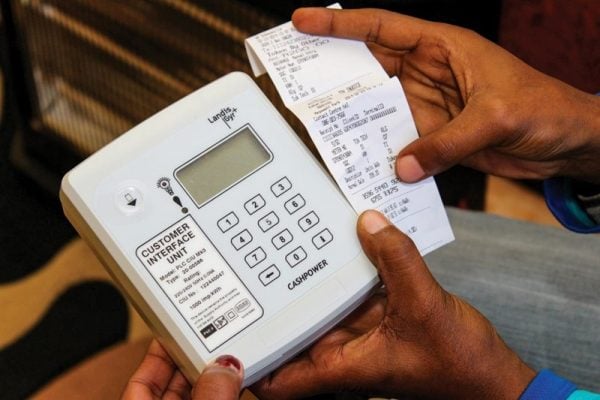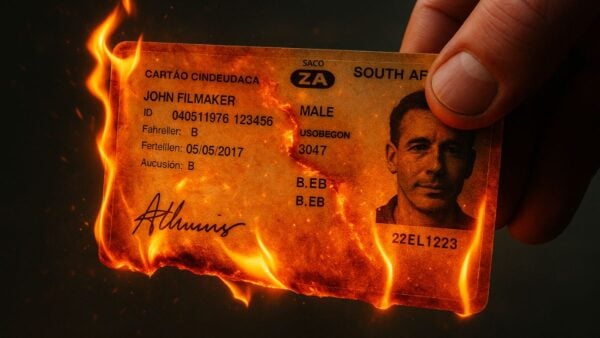Punching bag for failure in South Africa

South African state departments continue to blame the State IT Agency (Sita) for inefficiencies and misconduct due to its mandate, with two occurrences in the past month.
However, the agency says its service delivery coverage of state departments is far more limited than it is made out to be.
The Sita Act mandates that all state departments procure ICT equipment and services from or through the agency.
While this makes Sita the perfect scapegoat for any departmental failures that can be attributed to technological inefficiencies, it is not to say that Sita is always holding up its end of the bargain.
If it had, the Auditor General of South Africa may not have regressed its audit for the 2023/24 financial year to a disclaimer of opinion.
The most recent instance concerned the procurement of 22 laptops by the Mpumalanga Department of Basic Education for R2 million.
When provincial MPs questioned her about the Project Management Unit (PMU) guidelines concerning the contract, Mpumalanga MEC for education, Landulile Cathrine “Cathy” Dlamini, said her department had procured the laptops through “the Sita contract.”
“The department did not overlook PMU processes. These materials are not classified as LTSM — that is, learner-teacher support material — and thus should be procured through the SITA contract,” she explained.
Dlamini shifted the blame for the bloated R91,000 price for each laptop from the Mpumalanga Provincial Government to Sita.
However, Sita hit back at the MEC, saying that Dlamini’s department had a panel of suppliers to choose from to procure the computers.
Sita said it was responsible for establishing the transversal panel (RFB740) that enabled the department to source laptops from suppliers and did not benefit from the contract.
The agency explained that a transversal panel lists vetted suppliers that are part of the National Treasury and Sita’s procurement mechanisms, which ensure compliance, competitiveness, and fair opportunity.
Sita spokesperson Tlali Tlali said that Dlamini’s comments raise questions and must invite an investigation to understand what happened.
The Mpumalanga Provincial Government’s spokesperson, George Mthethwa, has since said that eight officials within the education department have been implicated and will undergo disciplinary action.
The system is down

Another instance where Sita said it was scapegoated involves the Department of Home Affairs (DHA) blaming its lack of front and back office system stability on the agency.
Home Affairs Minister Leon Schreiber has said that it was not fair to criticise and hold Home Affairs to account for IT failures when they had to be addressed by Sita.
“Even as we move with urgency to reform technological aspects under our control, our efforts will fall short for as long as we cannot maintain, procure and properly manage our own IT infrastructure,” said Schreiber.
Schreiber even went as far as to formally apply to sever ties with Sita and procure its own IT services and equipment.
Former DHA minister Aaron Motsoaledi also blamed Sita for Home Affairs’ system downtime, calling it the department’s “original sin” in 2022.
Like with the Mpumalanga Department of Education, Sita hit back at Home Affairs on both occasions, arguing that it has delivered on all agreed-upon outcomes.
“Apart from procurement delays affecting a small portion of services, Sita has delivered all agreed-upon outcomes and service milestones,” it said following Schreiber’s application.
On both occasions, Sita also revealed that Home Affairs is yet to upgrade from the Bronze level service agreement.
Tlali said the Bronze product has a 16-business-hour turnaround time for resolving issues and only supports up to 2 Mbps speeds on a copper-based connection.
He said Sita had also fulfilled the requirements of a proof of concept for access links at Gold service level agreement sites, for which a report was submitted in 2022.
However, Sita said Home Affairs chose not to proceed with the implementation. According to Sita, the department said this was due to downtime on the legacy core.
Sita’s limited coverage

Making Sita the fall guy eventually caught the attention of Solly Malatsi, the minister of communications, and his department, who recently told Parliament they have a plan to solve the state IT service delivery issue.
The Department of Communications and Digital Technologies (DCDT) director general, Nonkqubela Jordan-Dyani, said the problem was that all departments depended on Sita for their IT services.
Therefore, Malatsi proposed reviewing the regulations governing Sita to determine whether a threshold should be introduced to allow smaller departments to procure IT services and equipment independently.
This would free Sita to focus on the needs of large government departments and agencies.
However, Sita’s acting managing director, Goppal Reddy, revealed in a Parliamentary sitting with the standing committee on public accounts (Scopa) that his agency’s coverage was far less than made out to be.
“We conducted an assessment last year to try and quantify Sita’s presence in the national and provincial government ICT landscape,” Reddy told the committee.
“The results showed that Sita covers 37% of that landscape, and 63% is managed by government departments themselves.”
In its most recent defence against Home Affairs’ accusations, Sita also noted that the department only procures 20% of its IT services from the agency.
“It is important to note that DHA consumes only 20% of its ICT services from Sita, and the majority of that spending relates to mandatory services.”
































